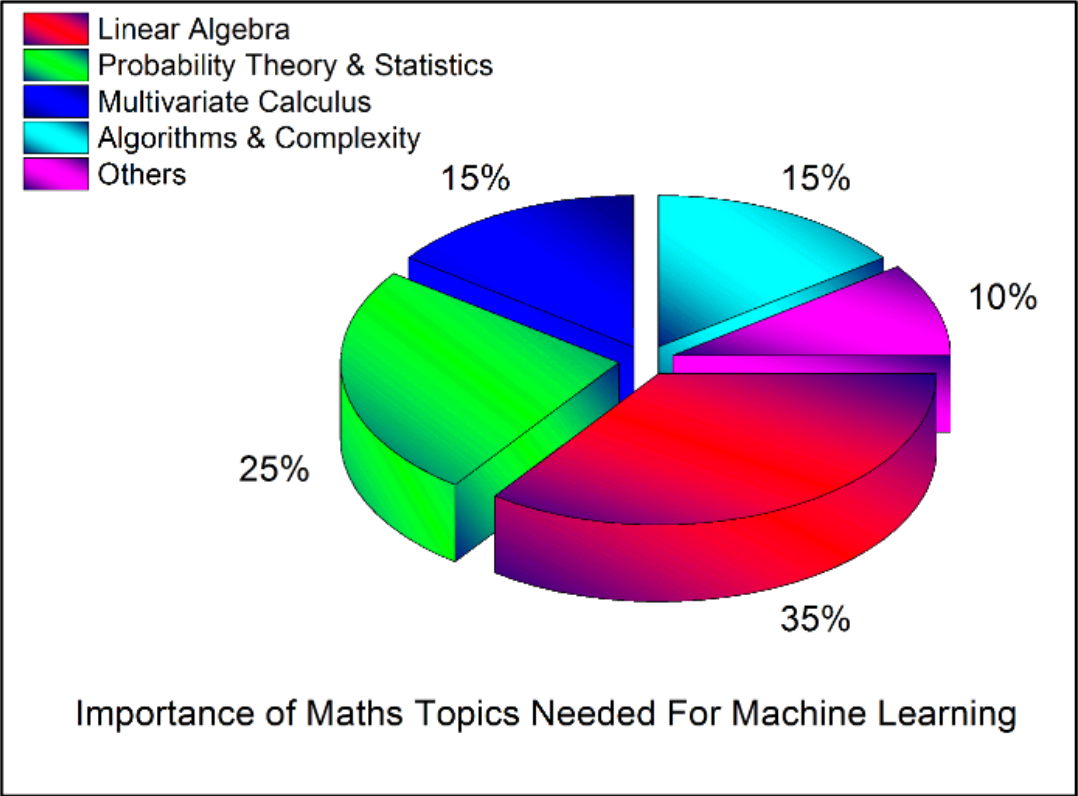Introduction
👋
Hi there! Welcome to the Introduction to Linear Algebra Using Python guide. This guide will introduce the very basics and walk you through the fundamentals of linear algebra. As we go, we’ll implement the concepts we learn in Python to get a feel for how these concepts are used in real world. I’m happy you’re here, and I hope you find this guide helpful. Let’s get to it! 🚀
Why bother with linear algebra?
Throughout history, we’ve sought to understand the world around us, and as a result, have developed useful tools to aid in this understanding—one of the most useful of which is mathematical models. Often, as it turns out, the most useful and powerful models are developed using concepts found in linear algebra. Models developed using linear algebra tend to describe the real world in a simple and understandable way.
Although linear algebra is a domain of mathematics, it’s not limited to only solving math problems. In fact, linear algebra is one of the most widely used areas of math. Applications can be found throughout the sciences, engineering, finance, and any other domain that deals with numbers. More recently, given the explosive growth of machine learning and artificial intelligence, you are finding applications of linear algebra in seemingly less obvious domains (for example: Magenta, AI generated artwork, archaeology, to name a few).
The reason I initially became interested in linear algebra was because of its importance in machine learning and AI. According to this random image from the Internet, linear algebra constitutes up to 35% of the mathematical underpinnings of machine learning.

The actual percentage can be debated, but that is beside the point. The fact is that linear algebra is incredibly important to this growing and exciting field. Hopefully this is enough to convince you as to why you should learn linear algebra, but if you need another reason: it’s fun!
Who is this for, and what are the prerequisites?
This guide is for anyone looking for a soft and intuition-based introduction to linear algebra. For the math portion, I’ve tried to maintain a balance between theory and practice, therefore, basic high-school math is really all you need. For the Python portion, basic working knowledge of Python should do. This won’t serve as an introduction to Python as there are far better resources out there than I could provide. The Python code in this guide is written using Python 3, but most examples should work with Python 2 as well, but your mileage may vary. Additionally, the code is written with a primary focus on understandability versus other factors (e.g., performance), so fair warning if you want to use it externally.
Motivating example
I tend to learn best by seeing examples and developing intuitions—especially after being introduced to a new concept. Therefore, these guides will contain many examples to help make connections between the concepts. Additionally, most concepts will have a Python implementation to give you an idea of how they are used in practice. With that said, for the sake of continuity (and lack of imagination), most of the examples will center around contrived problems within a hypothetical business. Meet Harry’s Hotdogs and Hamburgers:

Harry’s Hotdogs and Hamburgers specializes in, well, hotdogs and hamburgers. Harry tends to set up shop at various events selling his world-famous hotdogs and hamburgers. Business has been good to Harry and has allowed him to think about the future. Harry is thinking about expanding to new events and open new stands, but he wants to make sound financial decisions. Before making any decisions, Harry wants to make predictions about his future to ensure that the decision to expand is wise. He enlists our help to assist him with his finances, and has agreed to give us a list of his sales and finances. Throughout this guide, our goal will be to build models to help Harry make sound financial decisions.
This sounds like quite the responsibility, and you may not even know where to start, but that’s okay. I think you’re up to the challenge. There are lots of unknowns here, so we’re going to work through each one and build up our knowledge brick-by-brick until we have the necessary tools to help Harry. Ultimately, we’re working towards this goal of building a predictive model for Harry, but throughout this guide we’ll work through other problems Harry may have.
Why am I doing this?
Do we really need another introduction? Perhaps not. While there are more and more great resources available for linear algebra, historically, the resources have been either unnecessarily academic or abstract in nature. My intent with this guide is to provide an introduction to the concepts of linear algebra, and (hopefully) distill some of the unnecessarily complex topics down into something more consumable. I’ve tried to keep the theory down to a minimum, where possible, at the expense of mathematical rigor. I certainly won’t shy away from it where it’s beneficial, but you won’t see elaborate proofs of the concepts here. The main goal I’m seeking is to provide an intuitive bridge between concepts in linear algebra. Additionally, I’m going to demonstrate most concepts using Python to provide another layer of demonstration and applicability.
It’s also important to call out that I’m not an expert, nor am I claiming to be. Another (selfish) goal of this guide is to help in my own learning of linear algebra, and hopefully provide a differing perspective to the concepts. I’m a firm believer that there is no better way to understand a topic than trying to teach it.
How to read this
The guides are ordered in a way that should ultimately progress towards our goal of helping Harry. However, I’ve tried to keep the individual sections of the guides as self-contained as possible and where necessary, I’ve linked to other guides. This should allow you to skip to different concepts if that’s more your style.
Resources
I’ve based my own learning around a few pretty good resources, and you’ll likely see influences in these guides. A few resources that I find quite good:
- OpenCourseWare - Linear Algebra (Strang)
- Introduction to Linear Algebra
- Linear Algebra and Its Applications (Strang)
- Linear Algebra and Its Applications (Lay)
- Fast.ai - Computational Linear Algebra
Roadmap
- Introduction (this guide)
- Vectors
- Matrices
- Linear Systems
- Solving Systems of Linear Equations
- …
Feedback
I’m open to feedback, so please don’t hesitate to reach out if there is something you think can be improved, expanded on, or is flat out wrong. Questions or errata can be sent to bryan@bryan.blog.
Get Updates!
I’m currently in the process of writing and reviewing the other guides, so make sure you sign up below in order to be notified when I publish them.